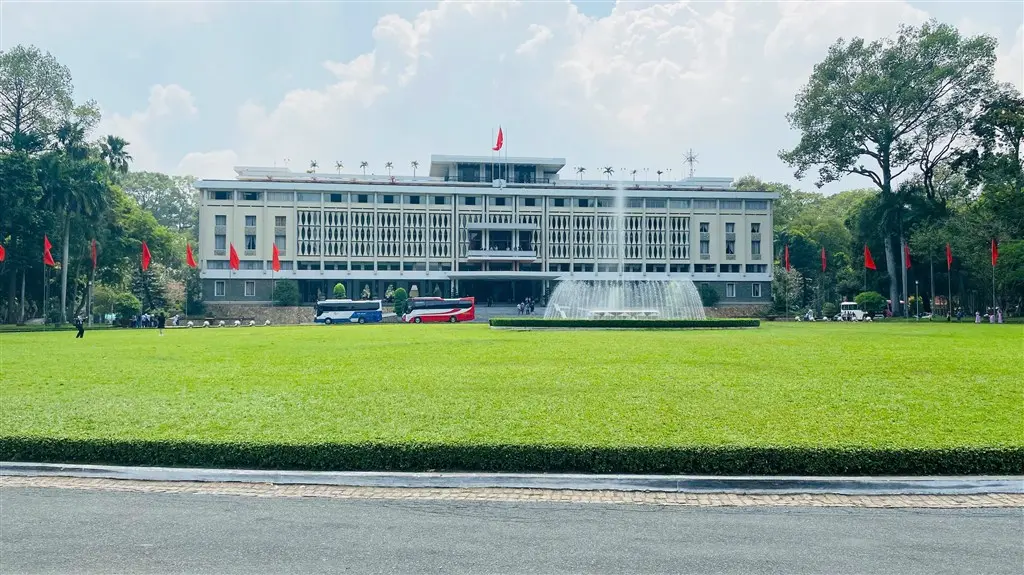Welcome to the vibrant world of vietnamese fruit, presented by essentialvietnamtravel.com. Vietnam, a country blessed with a tropical climate, offers an astonishing variety of fruits, many unfamiliar to Western palates. From the visually stunning dragon fruit to the notoriously fragrant durian, the fruits of vietnam are a feast for the senses. They represent tropical abundance and provide deep refreshment. Understanding these fruits in vietnam is key to appreciating the richness of Vietnamese Cuisine and the bounty of Vietnamese Agriculture.
This guide, brought to you by EssentialVietNamtravel.com, will walk you through the most popular, unique, and delicious fruits from vietnam, offering practical tips on how to enjoy them. We aim to provide clear, factual information, helping you navigate the colorful world of vietnam fruits.
Discover Popular Vietnamese Fruits: Dragon Fruit, Rambutan, and Other Exotic Flavors from Vietnam
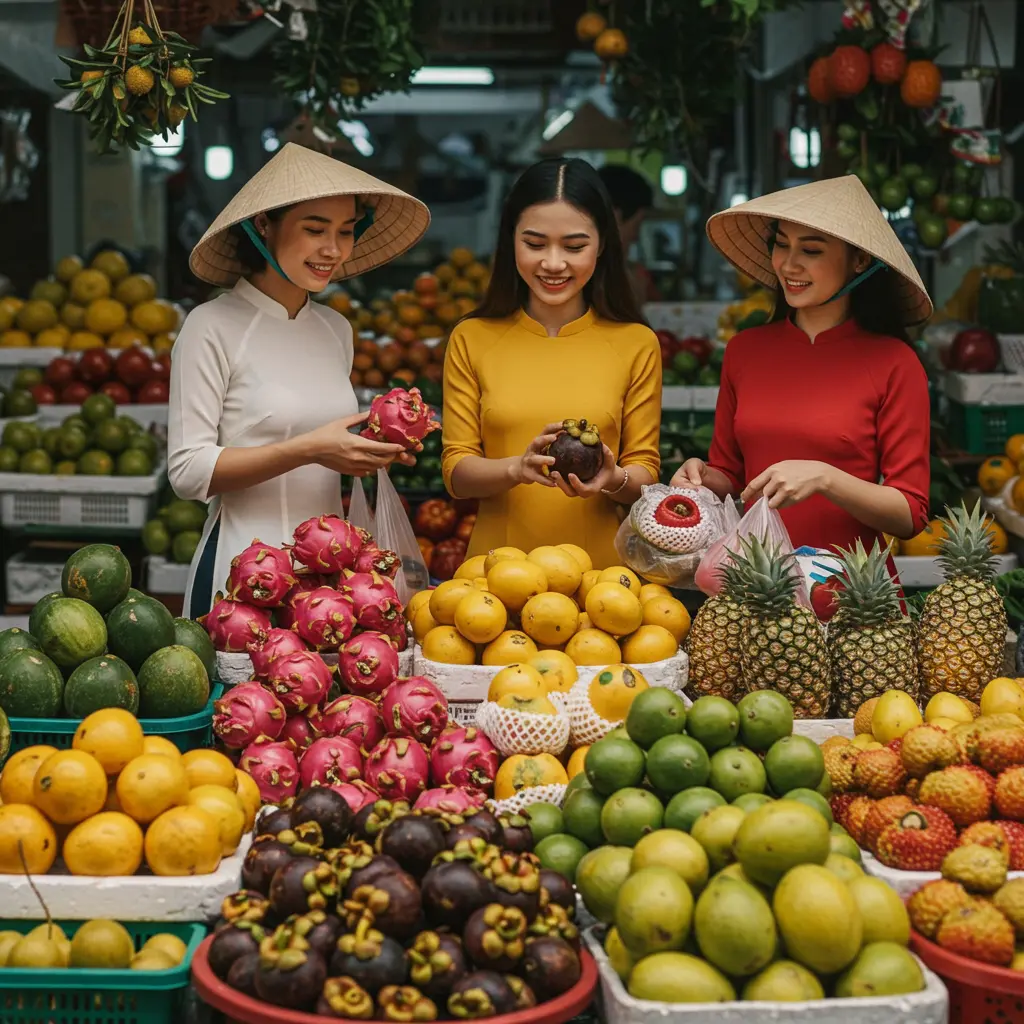
When exploring vietnamese fruit, two iconic examples often come first to mind: dragon fruit and rambutan. These tropical fruits in vietnam are not only visually appealing but also offer unique taste experiences, representing the gateway to the country’s diverse produce. Learning about these common options is a great starting point for anyone wanting to identify Vietnamese fruits.
Dragon fruit, known locally as thanh long, is perhaps one of the most recognizable exotic fruits in vietnam. Its striking appearance, often featuring vibrant pink skin with green-tipped scales, makes it stand out in any vietnamese fruit market. While the pink-skinned variety with white flesh dotted with tiny black seeds is common, you might also find varieties with pink flesh or yellow skin.
Native to the Americas but widely cultivated in Southeast Asia, its origin in Vietnam is significant, particularly in provinces like Bình Thuận. The taste is mildly sweet, often compared to a blend of pear and kiwi, offering subtle exotic flavors. It’s a source of natural sweetness without being overpowering. Eating dragon fruit is simple: slice it lengthwise and scoop out the flesh, or peel the skin back. It’s commonly eaten fresh, added to fruit salads, or blended into refreshing Vietnamese Smoothies. Its relatively neutral flavor makes it versatile.
Rambutan, or chôm chôm, is another beloved fruit vietnamese people enjoy, especially during its peak season. The name translates to “messy hair,” perfectly describing its appearance. This golf-ball-sized fruit is covered in soft, pliable spines, giving it a distinctive hairy texture. Usually red, sometimes yellow or orange when ripe, the skin peels away easily to reveal a translucent, whitish orb of flesh clinging to a central seed.
The taste is predominantly sweet, similar to a lychee or grape, but often with a slightly tangy note. Rambutan vietnam is a seasonal treat, eagerly anticipated. To eat it, gently score the skin around the middle with a knife or your thumbnail and pull the two halves apart.
Pop the flesh into your mouth but be careful not to eat the seed. Finding vietnam rambutan is easy in local markets when in season. These two fruits exemplify the approachable side of vietnam exotic fruits, offering a delightful introduction to the country’s agricultural gifts. They are staple food items, enjoyed daily by many.
Spotlight on Must-Try Vietnamese Fruits: Lychee, Jackfruit, and Mangosteen Details
Beyond the initial popular choices, Vietnam boasts other must-try fruits that offer incredible flavors and textures. Lychee, jackfruit, and mangosteen are staples in the Vietnamese fruit landscape, each holding a special place in the country’s culinary scene and agricultural output. Understanding these vietnam fruits deepens appreciation for the variety available. These are often sought after when people look for the best vietnamese fruit to try in Hanoi or Ho Chi Minh City.
Lychee, known as vải, is a cherished fruit in vietnamese culture, especially prominent in the north during the summer. Its arrival signals the peak of the hot season. This small, round fruit has a rough, bumpy, reddish-pink skin. Peeling it reveals succulent, translucent white flesh with a delicate floral aroma and intensely sweet flavor.
The season for lychee is relatively short, typically concentrated in June and July, making it a prized seasonal delicacy. Be mindful of the single, inedible brown seed inside. Lychees are usually eaten fresh, their juicy sweetness providing instant refreshment. They are also used in desserts, drinks, and sometimes even savory dishes. They are a significant plant product for export.
Jackfruit, or mít, is a giant among fruits vietnam offers. It’s one of the largest tree-borne fruits in the world, with some specimens reaching enormous size. The exterior is thick and bumpy green or yellow skin. Inside, you find numerous yellow, bulbous pods of flesh surrounding large seeds, embedded within a fibrous core.
The use of jackfruit is incredibly culinary. Ripe jackfruit flesh is sweet, with a unique flavor profile often described as a mix of pineapple, banana, and mango. It can be eaten fresh or used in desserts like chè (sweet soups). Unripe green jackfruit has a neutral flavor and a stringy, meat-like texture, making it a popular meat substitute in vegetarian and vegan dishes, often used in savory preparations like salads or stews. Preparing a whole jackfruit can be sticky work due to its natural latex, but pre-cut portions are widely available in markets.
Mangosteen, măng cụt, often hailed as the “Queen of Fruits,” is a true treasure among tropical fruits from vietnam. Its regal nickname contrasts with the “King of Fruits” title often given to durian. The mangosteen in vietnamese markets is typically available from May to August. This round fruit has a thick, deep purple rind. To open it, score the rind horizontally around the middle and twist gently. Inside reveals several segments of pristine, opaque white flesh, resembling cloves of garlic. The texture is soft and juicy, melting in the mouth.
The flavor is a delicate balance of sweet and tangy, often described as sublime and unlike any other fruit. Vietnamese mangosteen is highly sought after for its exquisite taste. It’s almost exclusively eaten fresh to fully appreciate its delicate flavor. Finding perfect mangosteen requires checking for firm rinds without cracks or yellow sap stains. It’s a highlight among exotic fruits vietnam.
Beyond the Basics: Exploring Unique and Rare Vietnamese Tropical Produce
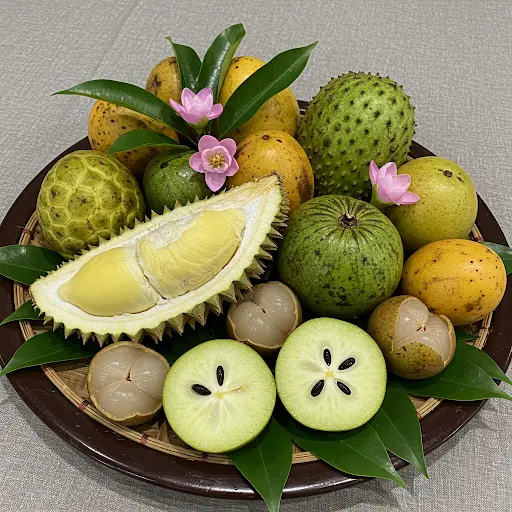
While popular fruits like dragon fruit and lychee are readily available, Vietnam’s tropical climate nurtures a fascinating array of lesser-known, unique, and sometimes considered “weird” vietnamese fruits. Exploring these offers a deeper dive into the country’s agricultural diversity and culinary traditions. These exotic vietnamese fruit options often carry intriguing local names and possess distinct characteristics. Finding a vietnam fruits list with pictures can be helpful for identification.
One of the most talked-about vietnam fruit is Durian (sầu riêng). Famous, or perhaps infamous, for its incredibly strong smell, durian is polarizing. Often banned from hotels and public transport, its pungent aroma is undeniable. However, for those who appreciate it, the creamy, custard-like flesh offers a complex flavor profile – rich, sweet, savory, and slightly alcoholic all at once. It truly earns its nickname, the King of Fruits. Trying durian fruit vietnam offers is an experience in itself. Numerous cultivars exist, each with slightly different tastes and textures.
Longan (nhãn), meaning “Dragon Eye” due to the black seed showing through the translucent flesh, is similar to lychee but smaller, with smoother, light brown skin. Vietnamese longan offers a juicy, sweet taste profile, perhaps slightly muskier than lychee. It’s widely available and enjoyed fresh.
Star Apple (vú sữa), literally “milk from the breast,” is a unique vietnamese milk fruit. This round fruit, typically purple or green, gets its name from the milky, sweet juice and the star pattern visible when cut in cross-section. The texture is soft, sometimes slightly gelatinous, and best enjoyed chilled. Squeeze the fruit gently before cutting to distribute the milky juice. Scoop out the flesh, avoiding the skin and seeds. Trying milk fruit vietnam (or vietnam milk fruit) is a memorable experience.
Soursop (mãng cầu xiêm) is a large, green, spiky fruit. Its white, fibrous flesh has a distinctive tangy taste, balancing sweetness with acidity. It’s highly valued for its health benefit as a source of antioxidants. Soursop is often blended into delicious smoothies (sinh tố mãng cầu).
Other notable mentions include Guava (ổi), often eaten green and crunchy with chili salt in guava in vietnam style; Passion Fruit (chanh dây), with its aromatic, tangy pulp full of seeds, known as passion fruit in vietnamese or passionfruit in vietnamese; the vietnamese pear (lê or mắc cọp) and vietnam pear, often crisp and juicy; the small, tart vietnamese orange fruit (cam sành), distinct from typical sweet oranges or the orange vietnamese fruit used for juice; vietnamese apples (táo) which are often small, green, and crisp like the Jujube (vietnamese apple); the tart green vietnamese fruit known as cóc (coc vietnamese fruit); and even vietnamese cherries (anh đào Đà Lạt) grown in cooler regions.
You might also encounter man vietnamese fruit (likely mận, meaning plum, which includes varieties like the roi or Java apple, sometimes called man fruit vietnamese or man fruit vietnam), or mong bu in vietnamese (pomelo). Even dates fruit in vietnamese (chà là) can be found, though less common as a fresh local fruit. These vietnamese exotic fruits showcase the incredible biodiversity.
The Divisive Durian: King of Fruits
No discussion of unique vietnamese fruit is complete without focusing on Durian. Its reputation precedes it. The smell is the first thing people notice – a powerful mix often described with comparisons ranging from gym socks to sweet cheese. However, overcoming the olfactory challenge rewards the adventurous eater with flesh unlike any other fruit. The texture is incredibly creamy, almost like a rich custard.
The taste is a complex blend of sweet, savory, and slightly bitter notes, with a lingering richness. In Vietnam, durian is not just eaten fresh; it’s incorporated into sticky rice, smoothies, pastries, and even candies. Different varieties, like Ri6 or Monthong, are prized for specific characteristics. Approach durian fruit vietnam with an open mind; you might discover why it’s revered as the King despite its challenging aroma. Remember its strong smell attribute and its royal nickname.
Vu Sua (Milk Fruit): The Creamy Star Apple
The vietnamese milk fruit, Vú Sữa, offers a gentler, more universally appealing experience compared to durian. Its common name, Star Apple, perfectly describes the beautiful star pattern revealed in its cross-section. Typically found with purple or green skin, the fruit should be gently massaged before opening to help release its signature milky white juice. The texture is soft, smooth, and uniquely milky or creamy, living up to its vietnam milk fruit name.
The flavor is sweet and delicate. It’s crucial to scoop the flesh away from the rind, which can be bitter or astringent. Enjoying milk fruit vietnam chilled enhances its refreshing quality. It’s a delightful example of the interesting textures found in tropical fruits of vietnam. This is a fruit in vietnam particularly loved by children for its sweetness and fun texture.
Where Vietnamese Fruits Grow: The Role of Vietnam’s Agriculture and the Mekong Delta
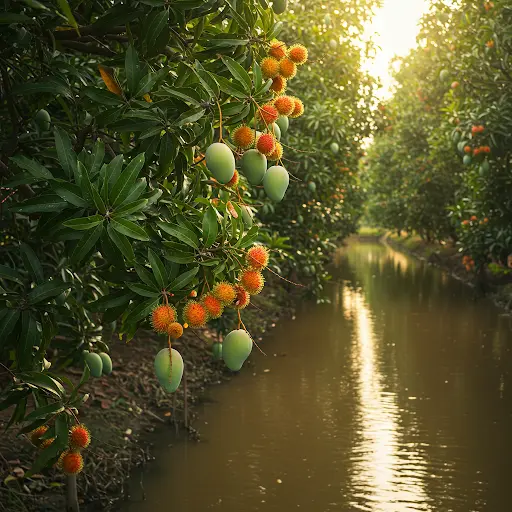
The incredible diversity and abundance of vietnamese fruit are direct results of the country’s favorable geography and climate. Vietnam’s elongated shape encompasses various microclimates, but the predominant tropical climate requirement fuels the growth of most iconic vietnam fruits. Understanding where these fruits come from highlights the importance of Vietnamese Agriculture and specific regions like the Mekong Delta.
The Mekong Delta, located in the south of Vietnam, is often called the country’s “rice bowl,” but it’s equally significant as its fruit basket. This vast, fertile region, crisscrossed by rivers and canals, provides the ideal conditions – rich alluvial soil, abundant water, and consistent warmth – for cultivating a huge variety of tropical fruits in vietnam. Many well-known fruits like dragon fruit (origin Vietnam often traced here), mango, rambutan, durian, mangosteen, and longan thrive in the Delta’s orchards.
Ready to Taste Vietnam’s Exotic Fruits?
Inspired to explore the vibrant fruit markets and taste these unique flavors firsthand? Find the best flight deals to Vietnam and get cashback on your bookings with WayAway!
Traveling through this region reveals endless expanses of vietnamese fruit trees, showcasing the scale of production. The Delta is central to the supply chain, feeding domestic markets, including Ho Chi Minh City Markets, and supporting Vietnam’s growing fruit export industry. Southeast Asian Agriculture practices here blend traditional knowledge with modern techniques.
While the South dominates tropical fruit production, other regions contribute unique offerings. The Central Highlands, with cooler temperatures, are suitable for crops like avocado and passion fruit. Northern Vietnam, experiencing distinct seasons, is famous for specific varieties of lychee (vải thiều Lục Ngạn), plums (man vietnamese fruit), and peaches during the summer months.
Certain temperate fruits like the vietnam pear or vietnamese cherries thrive in mountainous areas like Đà Lạt. Even seemingly common fruits like oranges have distinct regional varieties, such as the tart vietnamese orange fruit (cam sành) popular in the Mekong Delta. The existence of dedicated vietnam fruit trees adapted to different regions underlines the depth of the country’s fruit culture. This regional specialization ensures a year-round supply of various fruits from vietnam, making fruit vietnam a constant presence.
How to Enjoy Fresh Vietnamese Produce: Simple Tips and Culinary Ideas
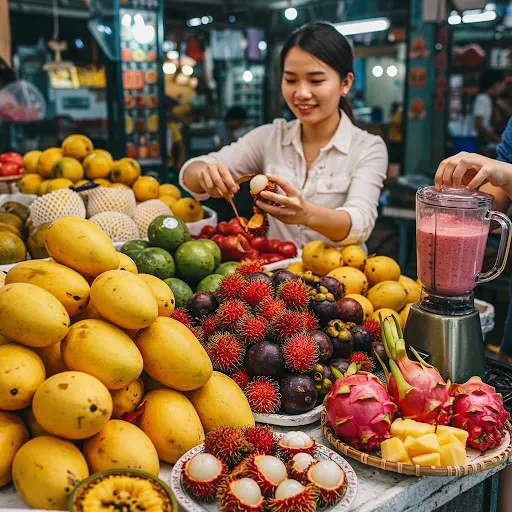
Experiencing vietnamese fruit goes beyond simply identifying them; knowing how to select, prepare, and enjoy them enhances the adventure. Whether you’re browsing a bustling vietnamese fruit market or trying fruits at a restaurant, a few tips can make the experience more rewarding. Fresh Vietnamese produce offers incredible flavors when handled correctly.
Finding quality fruit starts with knowing where to look. Local markets are often the best places, offering the freshest, seasonal selections. Look for vendors specializing in fruit. Supermarkets also carry fruits vietnam grown, but markets often provide better variety and ripeness. If you’re looking for specific or exotic vietnamese fruit, especially out of season, searching where to buy exotic vietnamese fruit online might yield results, though freshness can be a concern with shipping.
Once you’ve found your fruit, selection is key. Observe the color, smell, and firmness. For example, ripe dragon fruit should have vibrant skin but yield slightly to pressure. Rambutan should be brightly colored without too many dark spots. Mangosteen needs a firm rind, not rock hard or cracked. Don’t be afraid to ask vendors for help; they often know which fruits are perfectly ripe.
Preparation varies. Many vietnam fruits, like longan, lychee, and rambutan, simply need peeling. Others, like dragon fruit or star apple, are best cut and scooped. Jackfruit requires more effort if bought whole due to its sticky latex (oiling your hands and knife helps). Durian is usually opened by vendors due to its tough, spiky husk. Always wash fruits before cutting or peeling.
The simplest way to enjoy fruit vietnamese style is fresh, allowing the natural flavors to shine. Fruit platters are common appetizers or desserts. Fruit is also integral to Vietnamese culinary culture. Vietnamese Smoothies (sinh tố) are incredibly popular, blending fruits like soursop, mango, or avocado with condensed milk and ice.
Sweet soups (chè), like the famous Chè Thái (which, despite its name, is a beloved Vietnamese dessert), often incorporate fruits like jackfruit, longan, and lychee with jellies and coconut milk, making them key Vietnamese Desserts Ingredients. Unripe fruits like green mango or papaya feature in savory salads (gỏi). Exploring these culinary uses reveals the versatility of vietnamese fruits and vegetables.
Selecting the Best Fruits at a Vietnamese Market
Navigating a vietnamese fruit market is an exciting sensory experience. To select the best produce, engage your senses.
- Look: Check for vibrant colors appropriate for the fruit type. Avoid fruits with excessive bruising, mold, or dull skin. For fruits like mangosteen, look for a glossy purple rind with fresh green caps.
- Smell: Many ripe vietnam fruits have a distinct aroma. Mangoes should smell sweet near the stem. Passion fruit should be fragrant. While durian’s smell is strong, it shouldn’t smell sour or alcoholic, which indicates overripeness.
- Touch: Gently feel the fruit. It should generally yield slightly to pressure when ripe, but not be mushy (unless it’s a naturally very soft fruit). Ask the vendor if you’re unsure – they are experts. Observe what locals are buying.
- Seasonality: Buying fruits in season usually guarantees better flavor and price. Ask what’s currently best. A seasonal vietnamese fruit calendar can be a helpful reference.
Simple Ways to Prepare Common Vietnamese Fruits
Preparing vietnamese fruit is usually straightforward:
- Dragon Fruit: Cut lengthwise, then either scoop out the flesh with a spoon or slice further and peel the skin away. The skin is not eaten.
- Rambutan/Lychee/Longan: Use your fingernail or a small knife to make a shallow cut around the circumference of the skin. Peel off the skin. Eat the fleshy part around the seed (do not eat the seed).
- Mangosteen: Gently score the thick rind around the middle, being careful not to cut into the flesh. Twist the top half off. Use a fork or your fingers to lift out the white segments. Avoid the bitter yellow sap sometimes found on the rind.
- Star Apple: Massage gently. Cut in half horizontally to see the star pattern. Scoop out the flesh with a spoon, avoiding the skin and seeds. Or, cut off the top and squeeze the milky flesh out.
- Jackfruit: If buying segments, it’s ready to eat (ripe) or cook (unripe). If whole, oil hands and knife, cut into sections, remove the core and pods. Boil seeds separately if desired (they taste like chestnuts).
The Appeal of Vietnamese Fruits: Health Benefits and Cultural Significance
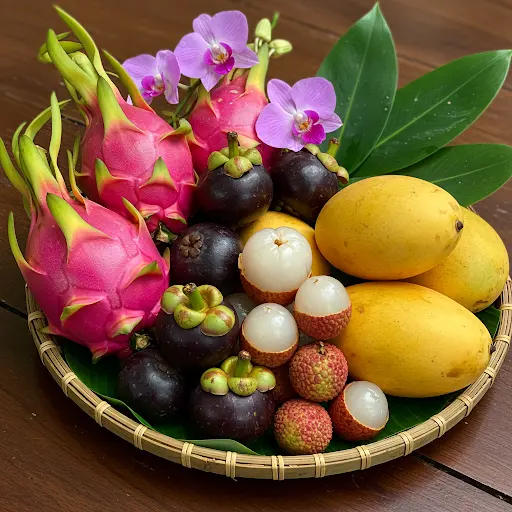
The allure of vietnamese fruit extends beyond their delicious taste and exotic appearance. They are deeply integrated into Vietnamese life, holding significant cultural significance and offering numerous health benefits. Understanding this context enriches the experience of enjoying fruits in vietnam. They are more than just food; they are part of the national identity and well-being.
From a health perspective, tropical fruits from vietnam are nutritional powerhouses. They are excellent sources of vitamins, minerals, and fiber. Dragon fruit is known for antioxidants and vitamin C. Oranges (vietnamese orange fruit) are packed with vitamin C. Soursop is studied for its potential health benefit related to antioxidant properties. Jackfruit provides potassium and fiber.
The natural sweetness (natural sweetness) of these fruits offers a healthier alternative to processed snacks. Incorporating a variety of vietnamese fruits and vegetables into the diet aligns with healthy eating principles. This connection to well-being makes the topic relevant under YMYL (Your Money or Your Life) considerations, emphasizing the need for accurate information about nutritional value.
Culturally, fruit plays a vital role. Specific fruits are associated with seasons and festivals. For example, pomelo (mong bu in vietnamese) is common during the Mid-Autumn Festival. Watermelon is popular during Tết (Lunar New Year) for its lucky red color. Fruits are common offerings at temples and family altars. They are frequently given as gifts, symbolizing goodwill and respect.
The act of peeling and sharing fruit is a common gesture of hospitality. Vietnamese Cuisine showcases fruit not just in desserts but also in savory dishes and drinks, demonstrating their integral role. The presence of fruit markets is central to community life. Exploring Food Tourism Vietnam often involves sampling the local fruit specialties, providing insight into regional culture. The sheer variety reflects the country’s agricultural heritage and the close relationship between people and the land. They are a fundamental part of cuisine, Vietnamese Cuisine.
Comparing Fresh Fruits Vietnam: How They Stand Out Among Tropical Fruits Asia
Vietnam is part of a region renowned for its incredible fruit diversity. While neighboring countries like Thailand and Malaysia also offer amazing tropical fruit, fresh fruits vietnam boasts its own unique characteristics and specific varieties that make it stand out within the broader category of Asian Fruit and Tropical Fruits Asia. Recognizing these nuances adds another layer of appreciation.
One key aspect is the sheer variety available within Vietnam due to its diverse microclimates, as mentioned earlier. While you’ll find common Southeast Asian fruits like mangoes, rambutans, and longans across the region, Vietnam often cultivates specific cultivars with distinct flavor profiles or appearances. For example, the Hoa Loc mango from the Mekong Delta is highly prized, and specific lychee varieties from the North are famous. The country also has unique offerings less common elsewhere, like the Star Apple (vietnamese milk fruit).
Compared to Thai fruits, vietnamese fruit might sometimes be perceived as slightly less intensely sweet, occasionally favoring a balance with tartness, as seen in the popular cam sành (orange vietnamese fruit) or green guava consumption. However, this is a generalization, as intensely sweet fruits like lychee and longan are extremely popular.
The preparation and culinary uses can also differ subtly between countries. While fruit smoothies are common across Southeast Asia, Vietnamese sinh tố often features unique combinations like soursop or sapodilla. The emphasis on using unripe fruits in savory salads is also a strong feature of Vietnamese Cuisine.
Furthermore, the accessibility and presentation in local markets can be part of the experience. Vietnamese fruit markets are vibrant hubs where you can see the direct connection between Vietnamese Agriculture and daily life. While you can find similar produce across Southeast Asian cuisine landscapes, the specific local names (weird vietnamese fruit names with pictures can help decode these), regional specialties, and cultural context surrounding fruits from vietnam make exploring them a distinctly Vietnamese adventure. The journey to identify Vietnamese fruits often leads to discovering subtle but significant differences from their regional counterparts.
Vietnam offers an incredible journey for the palate through its diverse and flavorful fruits. From the common dragon fruit and rambutan to the regal mangosteen and the challenging durian, vietnamese fruit provides a spectrum of tastes, textures, and aromas. Understanding where they grow, how to select and prepare them, and their cultural importance deepens the experience.
Further Reading: Explore More About Vietnamese Flavors
Whether enjoyed fresh, blended into a smoothie, or as part of a traditional dessert, these gifts from Vietnam’s fertile land offer refreshment, natural sweetness, and a direct connection to the country’s rich agricultural heritage. EssentialVietNamtravel.com encourages you to be adventurous – explore the local markets, try something new, and unlock the amazing world of fruits in vietnam. You’ll find it’s a delicious way to connect with Vietnamese culture.

